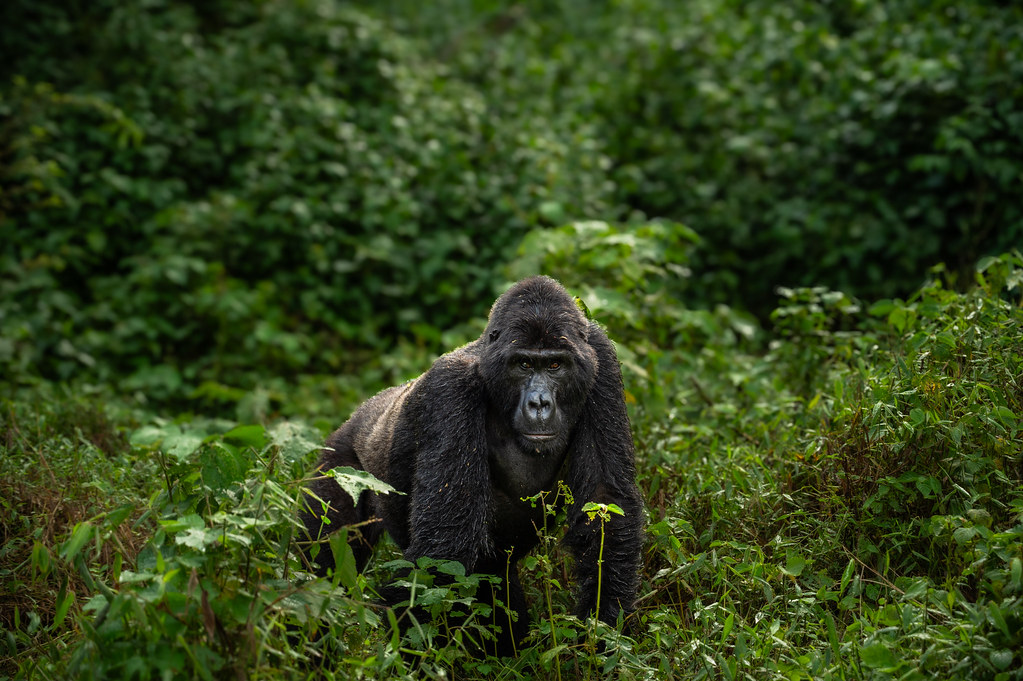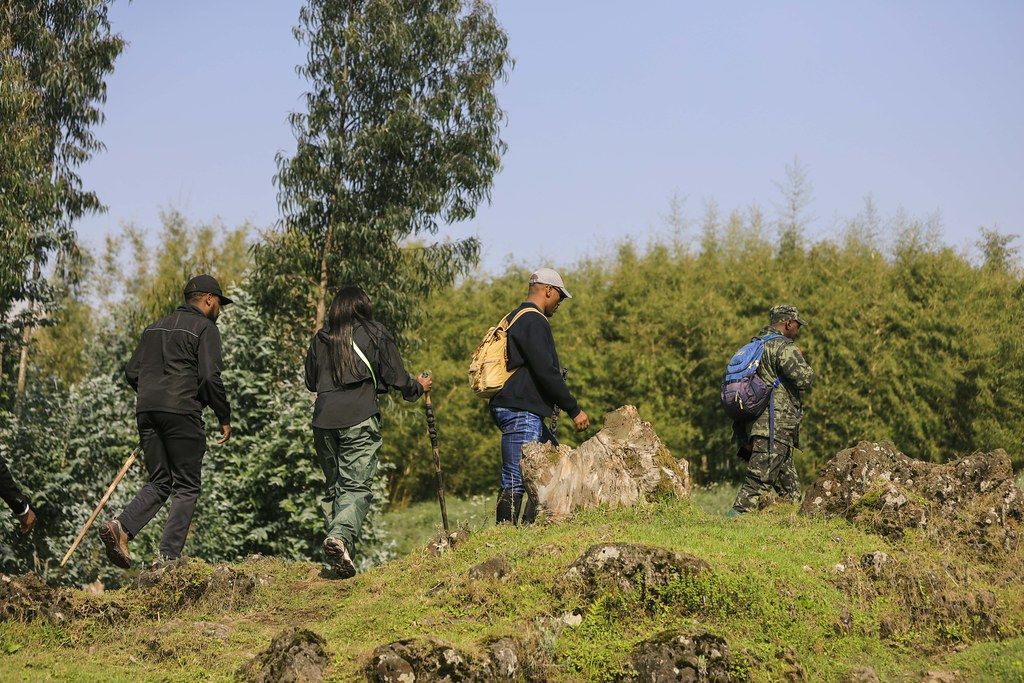The Lifespan of Mountain Gorillas in Their Natural Habitat and in Captivity.
Lifespan of mountain gorillas in the world — Lifespan of mountain gorillas in captivity — Why are mountain gorillas endangered — Lifespan of gorilla in captivity — How many mountain gorillas are left — Mountain gorilla size — Where do mountain gorillas live — What do mountain gorillas eat
Mountain gorillas are a rare subspecies of eastern gorillas that roam the lush subtropical and tropical rainforests of the Virunga volcanoes and Bwindi Impenetrable National Park – the ultimate destination for an exhilarating gorilla trekking experience in Uganda.
Only around 1000 individuals remain in the world. Mountain gorillas thrive in dynamic social groups of 5-30 individuals, led by a silverback who orchestrates the daily activities and safeguards the group from threats posed by humans and rival gorillas.
The lifespan of Mountain Gorillas
Mountain gorillas stand as the largest living primates, sharing an astonishing 98% of their DNA with humans.
When baby gorillas enter the world, they thrive on their mothers’ nourishing breast milk for the first four years of life. During this time, they begin to explore their surroundings while securely clinging to their mothers’ backs, gradually transitioning to their mothers’ diet.
Lifespan of Mountain Gorillas: From Infancy to Silverback
The lifespan of mountain gorillas is a remarkable journey marked by close family bonds, long parental care, and powerful social structures. These critically endangered primates, native to the mist-covered mountains of Rwanda, Uganda, and the DRC share 98% of our DNA and lead surprisingly human-like lives. Understanding their life stages not only enhances your appreciation of their world but deepens the meaning of every gorilla trekking encounter.
How Long Do Mountain Gorillas Live?
In the wild, the average lifespan of mountain gorillas ranges between 35 to 40 years. In protected environments, such as well-managed sanctuaries or zoos, they may live slightly longer sometimes up to 50 years thanks to consistent veterinary care and the absence of predators or disease. However, most gorillas live and die in the wild, where natural challenges can shorten their lives.
Early Life: The Infant Stage (0–3 Years)
Mountain gorilla infants are born incredibly small and fragile, weighing just around 4 pounds (1.8 kg). Much like human babies, they rely entirely on their mothers for nourishment and protection. For the first four months, babies are cradled in their mother’s arms before learning to cling to her back as she moves through the forest.
During this stage, the mother nurses her young until it reaches about 3 to 4 years old, fostering an intense maternal bond that defines the early years of a gorilla’s lifespan.
Juvenile Years: The Path to Independence (4–8 Years)
At around 4 years old, a young mountain gorilla begins to develop independence. Though still physically small and emotionally attached to the group, juveniles explore their environment more freely and begin to mimic adult behaviors such as chest-beating or play-fighting which are key to their social development.
Mothers typically do not reproduce again until their infant is weaned and independent, which can take up to four years, further limiting the species’ already low reproductive rate.
Adolescence and Sexual Maturity (8–15 Years for Females, 15–20 Years for Males)
Female mountain gorillas usually reach sexual maturity by 8 to 10 years of age and often have their first offspring by the age of 10.
Male gorillas mature more slowly, typically reaching full sexual maturity and the potential to lead a group by 15 to 20 years.
Interestingly, female gorillas actively initiate mating when they’re ready. They have a narrow fertility window—just 1 to 2 days each month, and after giving birth, they often wait four years before mating again.
The Silverback Years: Leadership and Legacy
As male gorillas mature, they begin to develop the distinctive “silverback”—a saddle of silvery-grey hair across their back that signals dominance and adulthood. A silverback is not just a leader but the protector, decision-maker, and primary mating partner within the troop.
Silverbacks may lead their families for years, defending them from rival males and guiding them to food and shelter. However, as younger males come of age, power struggles may ensue. Mature males may either challenge the dominant silverback or leave the group to form their own.
These leadership years mark the prime of a mountain gorilla’s lifespan, often lasting into their 30s.
Aging Gorillas: The Final Years (35+ Years)
In the later stages of life, gorillas, like humans, experience the effects of aging. It’s not uncommon for older gorillas to suffer from arthritis, particularly in the hands, feet, and spine, which can slow them down and make mobility difficult. They also tend to lose weight, grow thinner hair, and become more sedentary.
Despite these challenges, older gorillas are deeply respected within the group. A silverback, even in old age, may retain his leadership as long as no stronger rival arises.
Conservation Impact on Gorilla Lifespan
Thanks to conservation efforts in places like Volcanoes National Park (Rwanda) and Bwindi Impenetrable Forest (Uganda), the lifespan of mountain gorillas has improved over recent decades. Ranger patrols, veterinary teams, community engagement, and tightly regulated tourism (such as gorilla permits) help reduce poaching, disease, and habitat encroachment.
Each time you trek into the forest to see these majestic primates, part of your permit fee goes directly into protecting them ensuring not just survival, but a longer, healthier life for wild gorillas.
The lifespan of mountain gorillas is shaped by a delicate balance of biology, social hierarchy, and environmental pressures. Witnessing a silverback in his prime or a mother nurturing her young isn’t just a photo opportunity—it’s a glimpse into the extraordinary life cycle of one of Earth’s most intelligent and endangered species.



